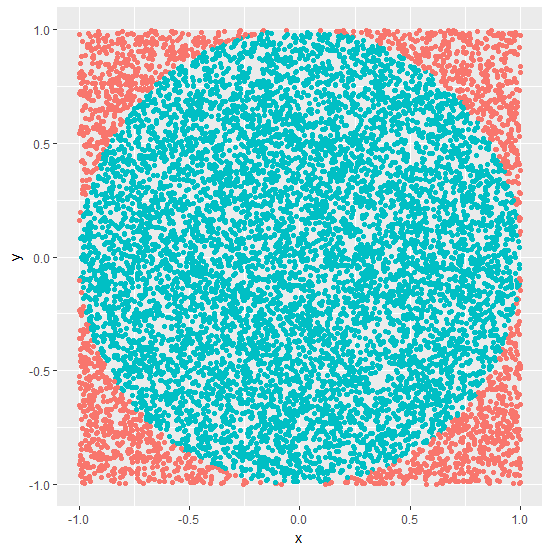STA 326 2.0 Programming and Data Analysis with R
Lesson 5.2: Simulations
Dr Thiyanga Talagala
2020-03-10
Monty Hall Problem: Rules
- The host must always open a door that was not picked by the contestant.
Monty Hall Problem: Rules
- The host must always open a door that was not picked by the contestant.
- The host must always open a door to reveal a goat and never the car.
Monty Hall Problem: Rules
- The host must always open a door that was not picked by the contestant.
- The host must always open a door to reveal a goat and never the car.
The host must always offer the chance to switch between the originally chosen door and the remaining closed door.
Taken from https://en.wikipedia.org/wiki/Monty_Hall_problem
Let's play the game!
Click here to play: http://www.math.ucsd.edu/~crypto/Monty/monty.html
Does switching increases the chance of winning the car?
We use sample function to assign car, goat, goat, behind the doors.
sample(c("car", "goat", "goat"))[1] "goat" "goat" "car"sample(c("car", "goat", "goat"))[1] "goat" "car" "goat"We use sample function to assign car, goat, goat, behind the doors.
sample(c("car", "goat", "goat"))[1] "goat" "goat" "car"sample(c("car", "goat", "goat"))[1] "goat" "car" "goat"Here is a function that will take player's initial choice of door.
select_first_door <- function(door){ door.allocation <- sample(c("car", "goat", "goat")) door.allocation[door]}select_first_door(2) # My first choice is the 2nd door[1] "goat"We use sample function to assign car, goat, goat, behind the doors.
sample(c("car", "goat", "goat"))[1] "goat" "goat" "car"sample(c("car", "goat", "goat"))[1] "goat" "car" "goat"Here is a function that will take player's initial choice of door.
select_first_door <- function(door){ door.allocation <- sample(c("car", "goat", "goat")) door.allocation[door]}select_first_door(2) # My first choice is the 2nd door[1] "goat"Modify your function so that it shows the player the door that the host selects. Hint: sample function act as a host.
Modify your function so that it includes the player strategy (switch or stay) as an input, and returns the appropriate result.
- Run your function 1000 times, for each strategy and report the proportion of times that car is selected. (You could put this in a loop and compute the proportion of times car shows.)
- How many times would you expect car to be selected out of 1000 runs?
Approximating Pi = 3.14616
AcircleAsquare=πr24r2 Equation of a circle center around 0: x2+y2=r2

Write a function to approximate π using Monte Carlo simulations.
Random Variable Generation: Inverse-Transform Method
Let X be a random variable with CDF F. Since F is a nondecreasing function, the inverse function F−1 may be defined as F−1(y)=inf{x:F(x)≥y},0≤y≤1.
It is easy to show that if U∼U(0,1), then
X=F−1(U)
has CDF F. Namely, since F is invertible and P(U≤u)=u, we have
P(X≤x)=P(F−1(U)≤x)=P(U≤F(x))=F(x)